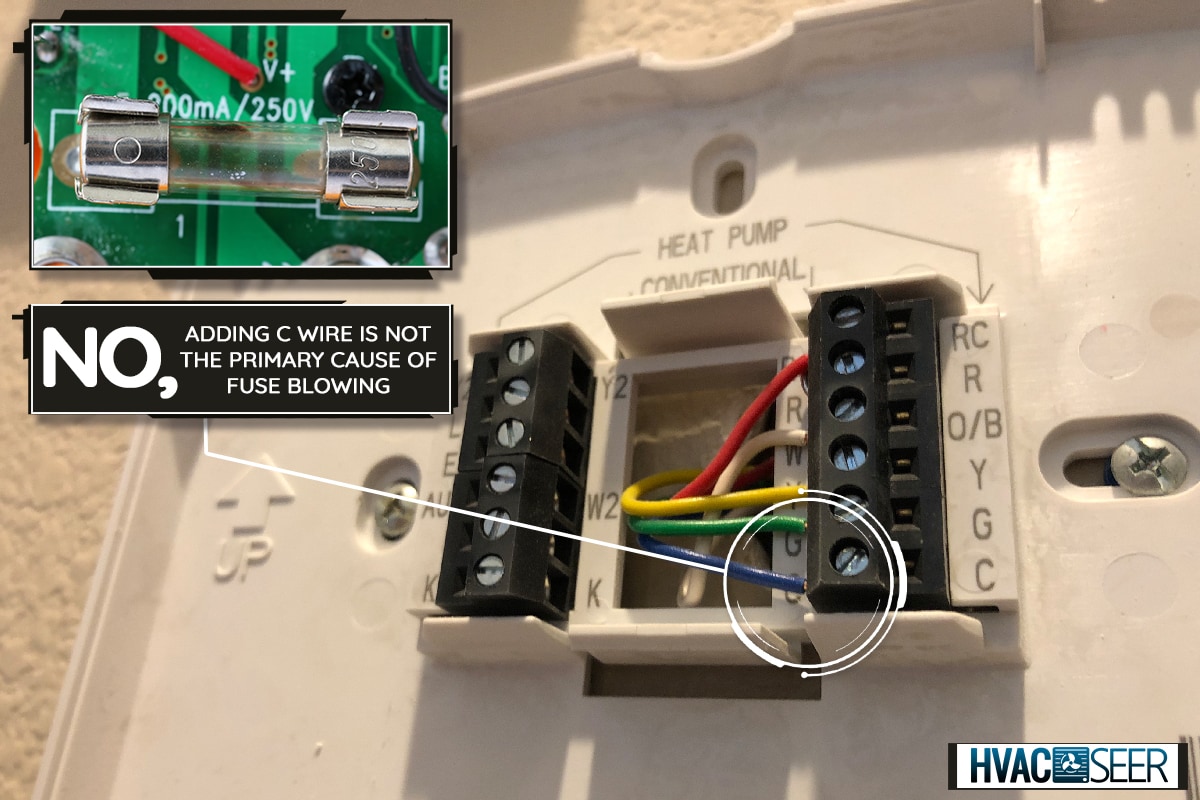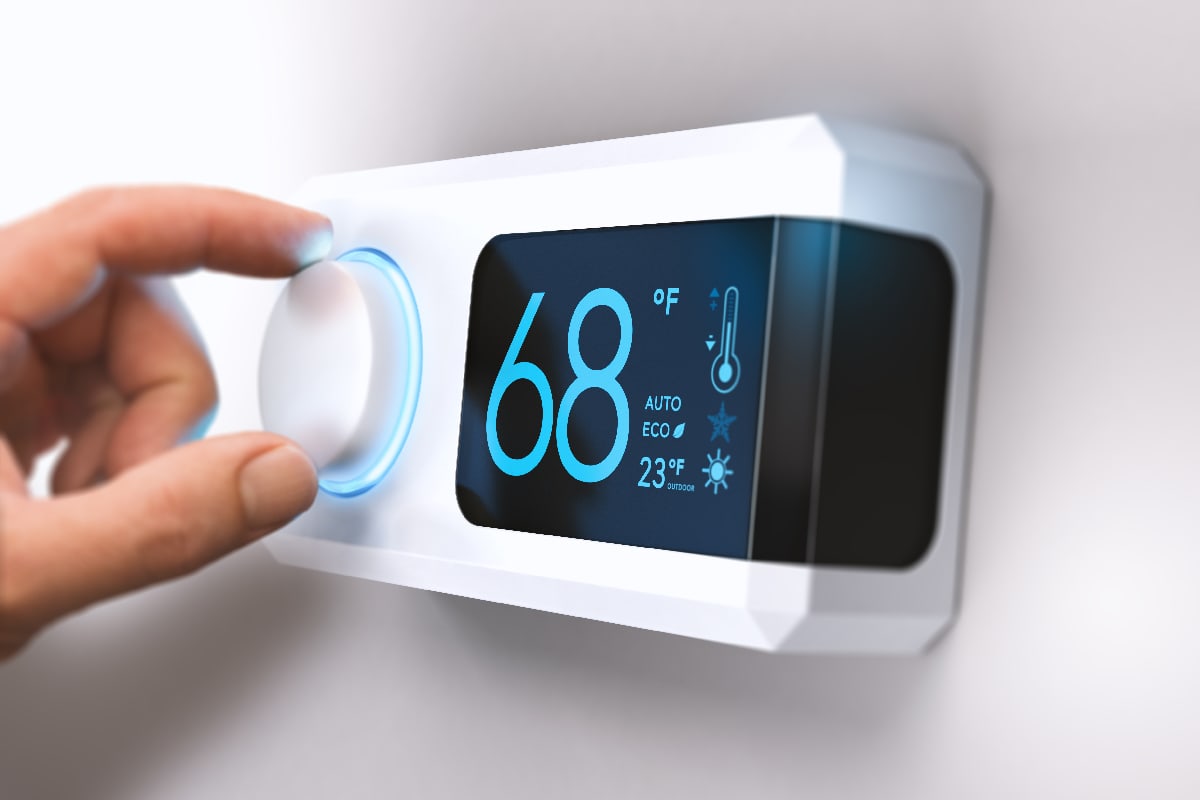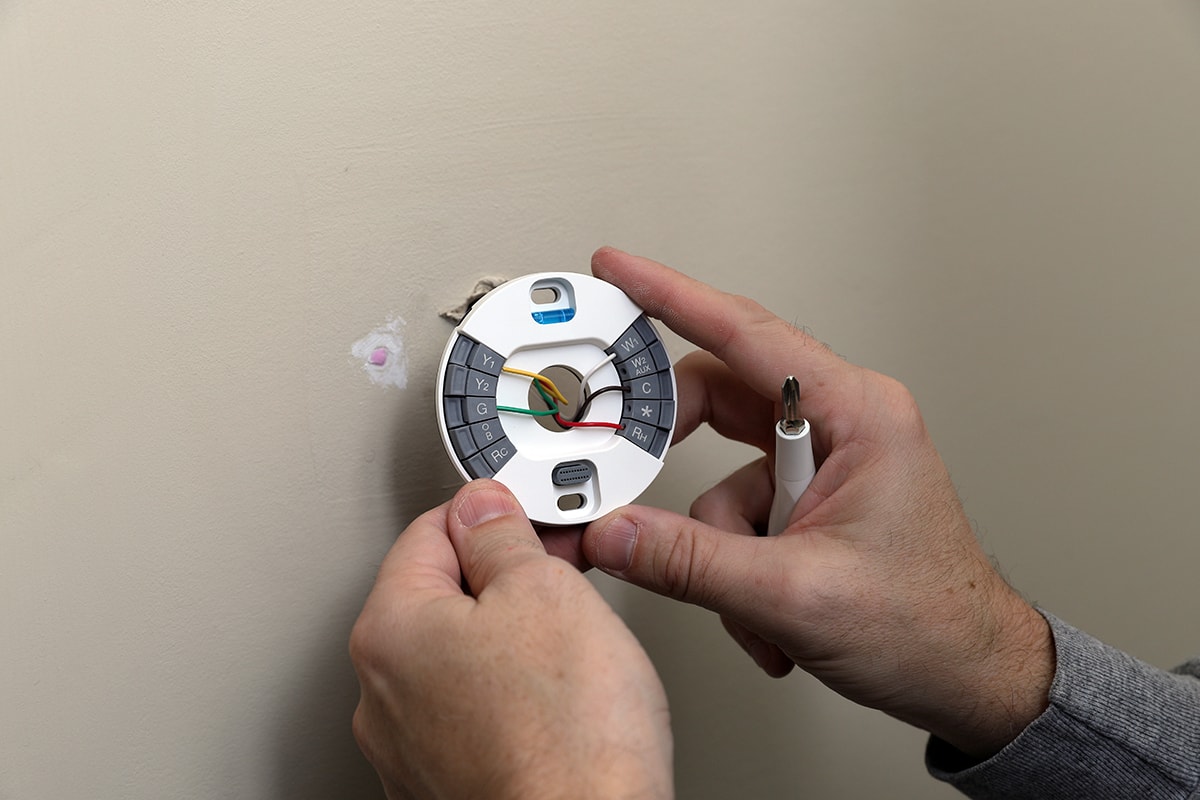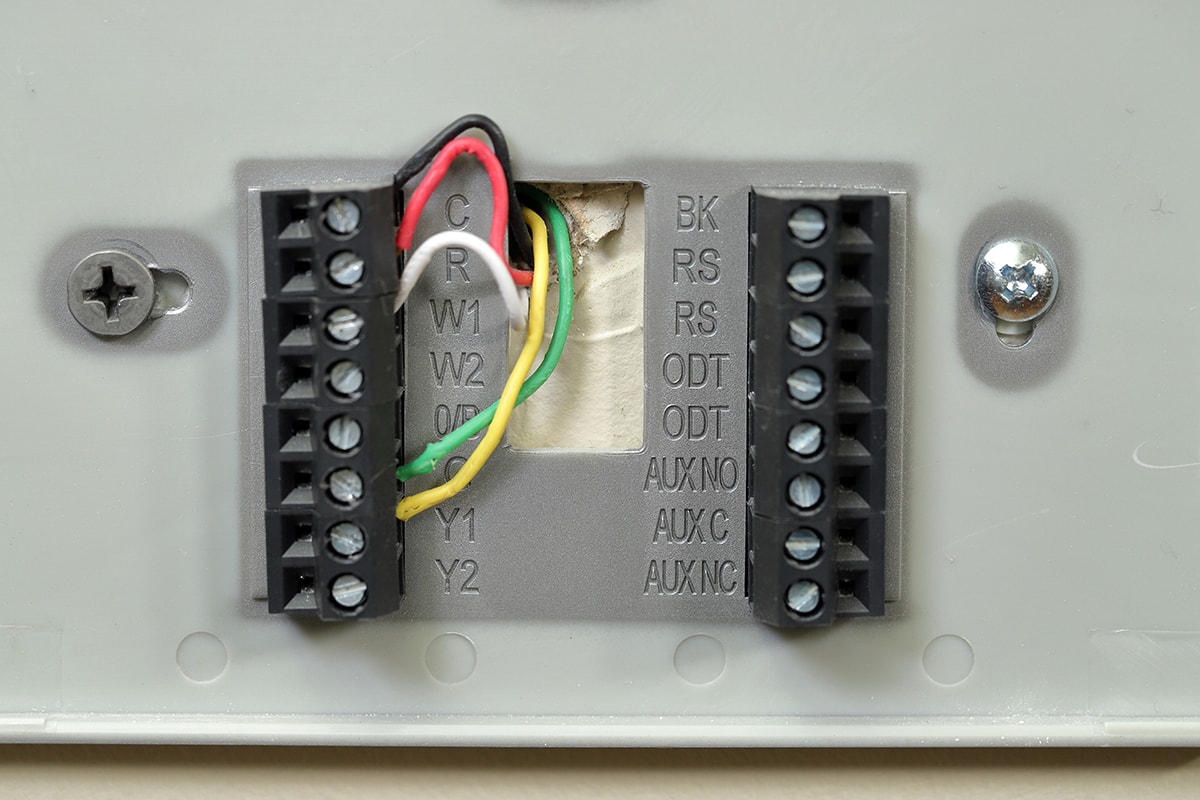It's convenient to have a thermostat that can quickly tell you the room temperature. But did you ever wonder if adding a C wire to the thermostat would blow the fuse? Well, we did comprehensive research in this article to answer all your questions, and this is what we found out.
No, adding a C wire is not the primary cause of the fuse blowing. However, you should check the fuse on the circuit breaker to ensure that the C wire is safe to connect to avoid electrical damage. See below for some reasons why the fuse might blow:
- Dirty fuse
- Loose wires
- Restricted airflow
By the end of this article, you'll learn about the C wire on a thermostat and what purpose it serves. We'll share with you the reasons why a thermostat's fuse might blow and how to prevent it. There's a lot to learn, so continue reading!

Does Adding C Wire to the Thermostat Blow the Fuse?
The C wire, or common wire, is a spare wire on a thermostat that can provide a return path for 24 volts of electricity. The C wire allows a constant flow of electricity required to power up the thermostat so that all its features are running.

Aside from WiFi, modern thermostats have advanced features like voice control and mobile remote access. These features consume electricity while the thermostat is on. To be able to keep them working properly, the C wire helps transmit sufficient power.
Mismatching the wires on the thermostat may cause electrical problems or even lead to a fuse blowing. You'll find these wires coded with corresponding letters and colors.
However, there's no standard color for the C wire. The codes barely depend on the manufacturer, so better read the thermostat's manual for accurate wire labels.
You can check below for some reasons why the fuse may blow.
Dirty Fuse
Keep the fuse clean and dry, as dust can heat up the fuse. Simply turn off the power supply, then use a soft brush to eliminate the dust. You can also touch the fuse cover to know if it's heating up. This can be a sign of accumulating dust inside.
Loose Wires
One thing that causes a loose wire is the frequent vibration of your HVAC unit. This may trigger an electrical imbalance that may lead to a short circuit. You can ask a technician to resolve excessive vibration and keep the wires tight in place.
Restricted Airflow
Incorrect size of air ducts and blower fans may result in voltage fluctuation. Restricted or reduced airflow can cause the voltage to fluctuate, which can damage the fuse when it occurs more often.
You should allow proper airflow so that the thermostat can accurately set the ideal temperature of the room. Otherwise, a sudden change from cooling to heating and vice versa is not healthy for your HVAC unit.
How to Add a C Wire to the Thermostat

Adding a C wire requires some effort. You need to prepare a new thermostat wire, which is 18-gauge with five copper strips. Most thermostats have four copper strips. So the extra strip on the thermostat wire is basically what you need to add a C wire.
See this thermostat wire on Amazon.
Also, prepare the other tools you need:
- Electrical tape
- Wire cutter
- Screwdriver
Now to add the C wire, simply follow these steps:
- Turn off the thermostat and remove its front plate.
- Take a picture of the wiring to remember how it's arranged.
- Remove the back plate of the thermostat. You should see a hole in the wall where the wire passes through. Hold the wire carefully so it will not fall into the hole.
- Pull the wire long enough to see the main covering of the copper strips.
- While holding the wire from both ends, cut the wire a few inches away from the exposed copper strips.
- Use electrical tape to connect the new thermostat wire with the old wire in the hole.
- Pull the wire on the other side of the wall until you reach the part where you wrapped it around the electrical tape.
- Uncover the HVAC unit to reveal its wiring. Gently remove the electrical tape on the thermostat wire, then insert it into the HVAC unit to keep it stable.
- Strip the ends of the wires, then match the color or code to the HVAC unit. Attach the wires by loosening the screws. Cover the HVAC unit afterward.
- Go back to the thermostat where the other end of the wire awaits, then screw the back plate against the wall.
- Cut and strip the wire and label the colors based on how you attach them to the HVAC unit. Clip the wires on their respective letters.
- Put the front cover on, then turn on the thermostat. You should now be able to use advanced features like the motion sensor. Otherwise, read the user manual to set up the thermostat properly.
You can watch a video here to see the steps:
https://m.youtube.com/watch?start=52&end=442&v=1KLlGrMoqUk&feature=youtu.be
What Other Wires Are on the Thermostat?

Since we already know about the C wire, let's figure out the purpose of the other letters we can usually find in a thermostat. This will help prevent the mismatching of the wires. Refer to some of the letter codes below.
R, Rh, and Rc Wires
The R wire connects with the transformer to power up your entire HVAC unit. Rh stands for a red-heated wire, while Rc means a red-cool wire. Both Rh and Rc wires function to control hot and cold temperatures, respectively. You can connect the R wire to either the Rh or Rc wire.
G Wire
The G wire turns the fan on and off via the thermostat. G wire helps to distribute the air by transmitting power to the HVAC unit's fan motor. Please do not confuse a G wire in a thermostat with a ground wire, as they are entirely unrelated.
W and Y Wires
These wires signal to the thermostat to alert you that a change in temperature is needed. The W wire detects the hot temperature and will tell you to cool down, while the Y wire will tell you to heat up when the temperature is too cold.
Both wires have a level range of 1-2 depending on how hot or cold the temperature is.
O and B Wires
The O wire will switch the valve from heating to cooling, while the B wire will do the opposite. They are important when you're changing the mode of an AC, for instance. However, some thermostats label the wire as O/B.
X or Aux Wire
Taking its name from the word auxiliary, this wire will tell you that the temperature is too low for the furnace or heater. Depending on the HVAC unit, it will then activate a secondary heat source to retain the heat mode function.
E Wire
The E stands for emergency. You should manually turn on the E wire when the heat pump cannot give enough heat for the room. The heat pump will then provide a hot temperature as a temporary solution.
How to Replace a Blown Fuse?

It's crucial to replace a blown fuse to prevent further damage. Consult an electrician to assess why the fuse has blown. There might be an unforeseen issue that needs immediate resolution.
You can refer to these steps to get an idea of how to replace a blown fuse:
- Switch off all the appliances, unplug them, and shut down the main power supply.
- Never touch a blown fuse, as it contains toxic chemicals that can irritate the skin. Instead, use pliers and a screwdriver to detach the blown fuse.
- Install the new fuse by screwing it into place. Make sure you use the same size, amperage, and type for safety.
- Turn on the power supply and try using some of the appliances.
- Observe the results for a few days. Call an electrician if something unusual happens, like a burning smell.
A recap
We learned that adding a C wire does not blow the fuse. But some causes, such as a loose wire, can damage the fuse.
We also provided steps on how to add a C wire. We explained the functions of other wires in a thermostat. Of course, we discussed how to replace a blown fuse. Always remember that hiring a professional electrician to do electric work is the safest option.
Do you want to read more articles like this one? Then visit us here:

